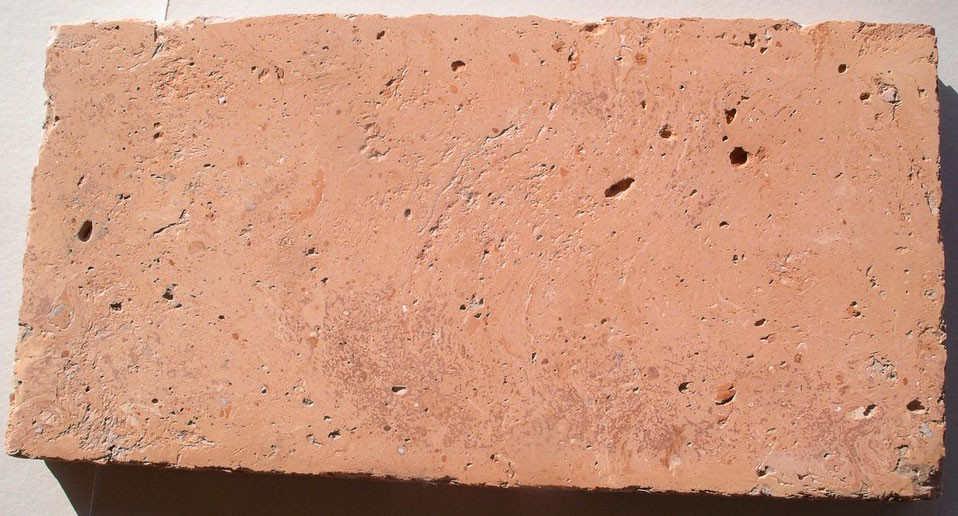The knotted ( or "nocciolato") mixture is the typical cotto of the Po valley. The lumps or color spots which are on the surface of the tiles are due to the clays of different natures. When rivers were without banks, the floods brought also clays from different places ( the Apennines, the Alpes..)and of different colors and composition.
These clays, sedimenting and overlapping in layers, have formed the current alluvional soils.
For centuries the extraction of clays by small furnaces around the area was made manually. The further operation was wetting the clay mixture with hoes, trying to uniform the mixture which normally was rather rough.
During cooking, clays of different nature showed with knots of different color and intensity.
HOLLOWS AND BLOWHOLES
Since the mixture was produced with rudimentary methods (hoes and shovels), at the time of shaping the clay into wooden molds only with manual pressure, it is obvious that blowholes remained trapped in the mixture. They were highlighted by larger or smaller holes on the surfaces of the tiles once they were smoothed manually ("orsatura")or worn by footsteps. Some blowholes which are a few millimeters down the surface, may appear even after laying.
The above can be regularly found in the old floors produced by hand in the past centuries. Fornace Polirone proposes, with their own methods of processing, this type of traditional floor.
On sample or drawing of the customer, we can realize any format, tone and pattern.






